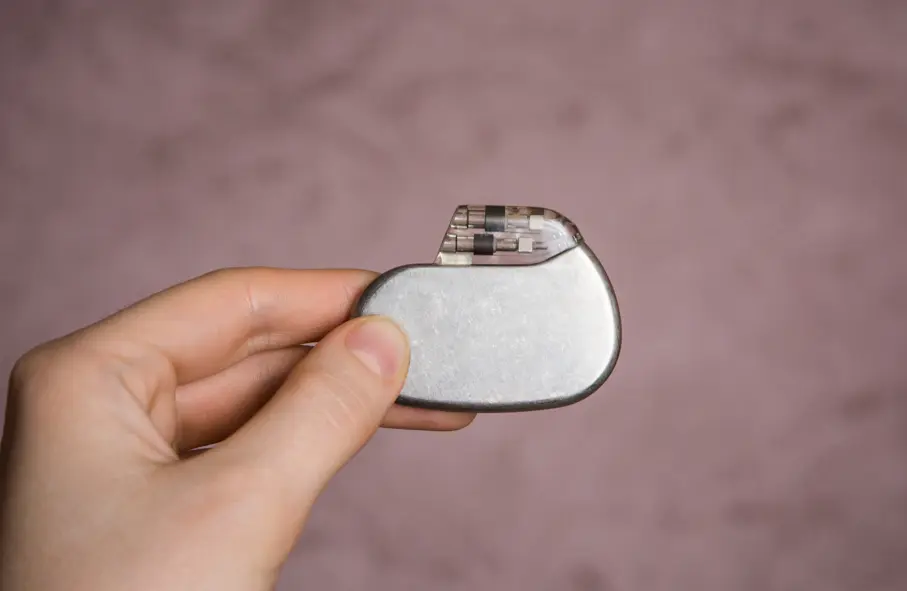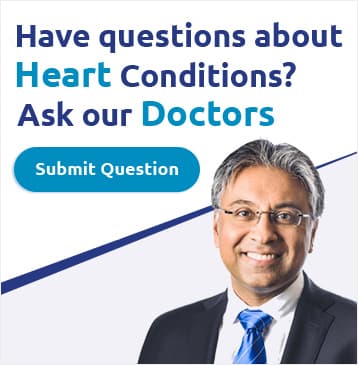Travelling with Arrhythmia: Safety Tips for Peace of Mind

Travelling offers the excitement of new experiences, time with loved ones, and a break from everyday stress. But for those living with arrhythmia (a condition characterised by irregular heart rhythms), the idea of being far from their healthcare provider or routine can bring a host of worries.
Is it safe to fly? What if you need emergency care abroad? Can travel disrupt your medication schedule? These are typical concerns, but most individuals with arrhythmia can travel safely and comfortably with proper planning.
At The Harley Street Heart & Vascular Centre, we understand the importance of feeling confident and prepared while travelling with a heart condition. This comprehensive guide covers everything from pre-travel planning and medications to flying, insurance, and emergency preparedness. We aim to help you enjoy your journey with greater peace of mind.
Understanding Arrhythmia and Travel Considerations
Arrhythmia refers to an abnormal heart rhythm. This can mean the heart beats too fast (tachycardia), too slow (bradycardia), or irregularly (fibrillation).
Common Types of Arrhythmias:
- Atrial Fibrillation (AFib): Irregular, often rapid heartbeat that can increase stroke risk.
- Supraventricular Tachycardia (SVT): Rapid heartbeats originating above the ventricles.
- Bradycardia: Abnormally slow heart rhythm.
- Ventricular Tachycardia or Fibrillation: More serious and may require implanted devices or emergency care.
Can You Travel with Arrhythmia?
Yes, with proper preparation. For many patients, travel is possible and encouraged for the overall quality of life. The key is ensuring your condition is stable and taking preventative measures to manage risks.
Step 1: Talk to Your Cardiologist
Before any trip, consult your cardiologist. This is particularly important if:
- You've recently been diagnosed.
- You have a new or adjusted medication.
- You've experienced recent symptoms (e.g., palpitations, fainting).
- You have an implanted device (pacemaker or ICD).
What to Discuss:
- Are you stable enough to travel?
- What should you do if symptoms arise?
- Can you adjust your medication schedule across time zones?
- Should you wear a medical alert bracelet?
Pro Tip: Ask your provider for a travel letter outlining your condition, medication list, and device information (if applicable). This is helpful for airport security or in case of an emergency abroad.
Step 2: Organise Your Medications
Keeping medications organised is critical while travelling.
Medication Checklist:
- Bring enough medication for the duration of your trip plus extra (at least 3-5 days' worth).
- Store medications in your carry-on, not checked luggage.
- Keep medications in original packaging with prescription labels.
- Carry a printed and digital copy of your prescription and a doctor's note.
Managing Medications Across Time Zones:
Ask your doctor how to adjust dosing if travelling to a significantly different time zone. Some medications, such as blood thinners (e.g., warfarin), may require precise timing.
Clinical Tip: Use a medication app or travel pill organiser with alarms to stay on schedule
Step 3: Prepare for Air Travel
Flying is generally safe for arrhythmia patients. However, long flights, dehydration, immobility, and cabin pressure can affect your cardiovascular system.
Pre-Flight Planning:
- Book aisle seats for easier movement.
- Avoid alcohol and caffeine before and during flights.
- Wear compression socks to improve circulation.
- Drink plenty of water.
- Walk the aisle or stretch every 1-2 hours.
Pacemakers and Airport Security:
If you have a pacemaker or ICD:
- Show your device card to TSA officers.
- Request a pat-down inspection instead of walking through metal detectors
- Carry a travel letter from your cardiologist.
Important: Security scanners are generally safe, but hand-held metal detectors should not be held over your device.
Recognising Symptoms in the Air:
Seek immediate assistance if you feel:
- Palpitations
- Chest discomfort
- Dizziness or lightheadedness
- Shortness of breath
Flight Tip: If you're concerned about symptoms or medication timing, inform a flight attendant early.
Step 4: Choose Heart-Healthy Accommodations and Activities
Whether you're vacationing or travelling for business, choosing destinations and plans supporting your health is wise.
Heart-Smart Travel Tips:
- Pick accommodations with elevators or ground-floor rooms if you have exercise intolerance.
- Ask if the hotel offers refrigeration for temperature-sensitive medications.
- Avoid high-altitude destinations without medical clearance.
- Choose activities that match your fitness level and comfort.
Stay Active, Safely:
- Light walking and gentle stretching help circulation.
- Avoid strenuous hikes or extreme sports unless cleared by your doctor.
- Know your exercise tolerance and don't push your limits.
Step 5: Emergency Preparedness While Travelling
Preparing for the unexpected is essential, especially when managing a heart rhythm condition.
Must-Have Travel Essentials:
- Medical ID bracelet or necklace
- List of medications and dosages
- Printed summary of medical history
- Doctor's contact information
- Emergency contact numbers
Know Your Destination's Medical Resources:
- Research nearby hospitals or cardiology clinics before you go.
- Know how to
dial emergency services in your destination country. - Consider apps like Google Maps or TravelSmart by Allianz for locating care.
Translation Tip: Carry a translated card stating your condition and medications in the local language. This is helpful in emergencies where English isn't widely spoken.
Step 6: Travel Insurance and Health Coverage
Proper insurance can make a difference if you experience health issues while away from home.
Travel Insurance Checklist:
- Ensure your policy covers pre-existing conditions, including arrhythmia.
- Check for emergency evacuation coverage.
- Confirm your destination's healthcare system accepts foreign travellers.
Helpful Resource: The American Heart Association recommends exploring travel insurers that specialise in covering chronic illnesses or have experience with international patient services. This underscores a vital aspect of travel planning for those with pre-existing conditions.
Step 7: Nutrition and Hydration on the Road
Food and drink can impact heart rhythm, especially when travelling disrupts everyday eating habits.
Arrhythmia-Smart Eating While Travelling:
- Avoid high-sodium meals (common in fast food and packaged snacks).
- Limit caffeine and alcohol, which can trigger symptoms in sensitive individuals.
- Pack healthy snacks like nuts, fruit, or whole grain crackers.
Hydration Tips:
- Carry a refillable water bottle.
- Avoid sugary drinks or excessive caffeine.
- Drink more water in hot climates or on long travel days.
Expert Insight: The American Heart Association advises maintaining a healthy diet and staying adequately hydrated, essential for overall heart health while travelling. This reinforces the significance of lifestyle choices even when away from home.
Step 8: Stay Mindful of Stress and Sleep
Stress and poor sleep are common triggers for arrhythmia. Travel often disrupts both, especially during long flights or busy itineraries.
Manage Travel Stress:
- Allow extra time at airports or stations to avoid rushing.
- Practice deep breathing or meditation during downtime.
- Bring familiar items (books, playlists, blankets) to ease transitions.
Prioritise Sleep:
- Stick to your usual bedtime routine.
- Use eye masks, earplugs, or white noise apps to aid sleep.
- Limit screen time before bed and avoid late-night caffeine or alcohol.
Travelling with an Implanted Device (Pacemaker or ICD)

If you have a cardiac implantable electronic device (CIED), such as a pacemaker or defibrillator, travel is safe with proper precautions.
Key Tips:
- Always carry your device ID card.
- Inform TSA or border officers before going through security.
- Avoid prolonged exposure to strong magnets or metal detectors.
- If travelling internationally, know the brand and model of your device for compatibility with global providers.
Device Monitoring: Ask your clinic if your device can be monitored remotely while you travel. Many modern devices support wireless data transmission.
Final Thoughts: Travel with Confidence and Control
Living with arrhythmia doesn't mean you must give up your love of travel. With thoughtful preparation, clear communication with your healthcare team, and awareness of your body's needs, you can explore the world safely and with confidence.
At our heart clinic, we believe in whole-person care. That means supporting your desire for adventure while keeping your heart health front and centre. Whether planning a weekend getaway or an overseas journey, our team is here to help you prepare, protect, and enjoy every step of your trip.
Next Step: Schedule a pre-travel consultation with one of our heart specialists today to personalise your travel safety plan.
This write-up has been medically reviewed by Dr. Michael Ross MacDonald, a consultant cardiologist at The Harley Street Heart & Vascular Centre in Singapore, to ensure the accuracy and reliability of the information provided.

